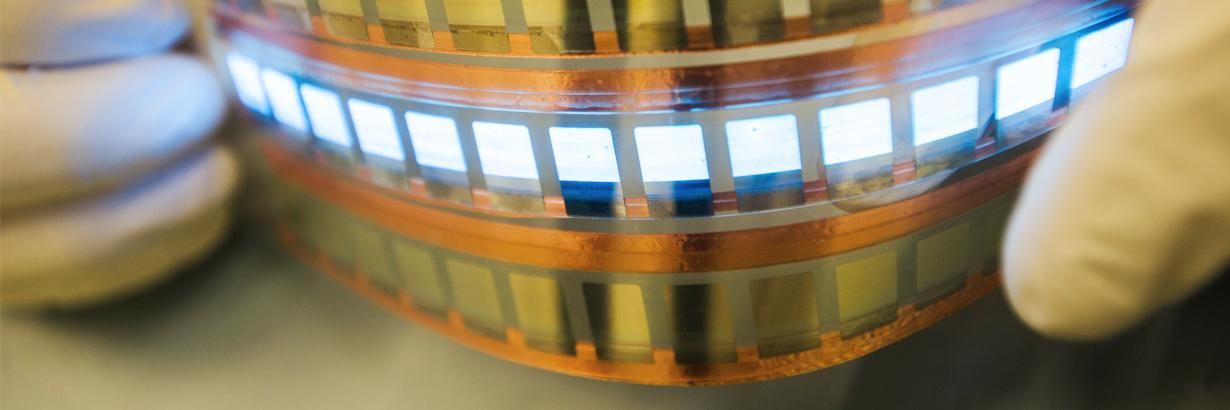
FUNDAMENTAL QUESTIONS
The aim of the research projects is to resolve fundamental questions regarding the optimization of materials, processes, and design schemes for the manufacturing of organic and printed electronics.
Research Projects
PreeMO: Early Detection of Electrolyte Disturbances by Non-Invasive, Continuous Monitoring in Premature Infants
The PreeMo project is a collaborative project funded by the German Federal Ministry of Education and Research (BMBF) that investigates the early detection of electrolyte disturbances by non-invasive, continuous monitoring in premature infants.
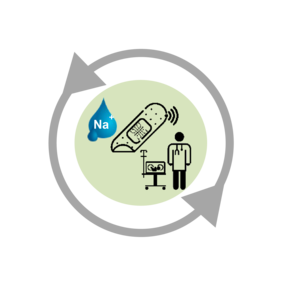
In the joint project PreeMO, innovative medical technology solutions are to be implemented specifically adapted to the special features of the physical and psychological development of premature infants.
Usually, the regulatory mechanisms of premature infants are not yet fully developed, and electrolyte disturbances often occur. Those must be treated promptly to avoid life-threatening conditions.
Within the research project PreeMO, a sensor system for non-invasive, continuous monitoring of the electrolyte balance of premature infants on the skin will now be investigated. The system will consist of an ion-selective multisensor system which will be integrated into a patch.
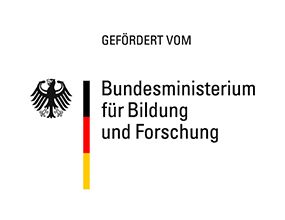
To this end, InnovationLab's task within the subproject Functional Printing for Ion-selective Multisensor Technology is to investigate additive printing processes for the mass production of such sensor technology and the upscaling of the manufacturing process.
Project Coordinator: Systemtechnik LEBER GmbH & Co. KG
Funding period: 01.06.2021 – 31.05.2024
2HORISONS: 2-wards Hybrid and Organic Electronics: International Development of Sensor Nodes
The 2HORISONS project is a cluster project funded by the Federal Ministry of Education and Research (BMBF) for the internationalization of clusters and networks.
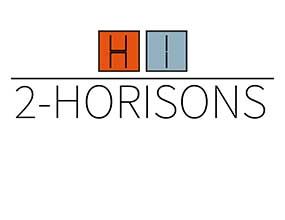
In cooperation with international partner organizations, the leading-edge cluster partners of 2-HORISONS are working on a standardized technology platform for printed sensor fields. Spatially resolved, printed multi-sensors are applied to light, thin and mechanically flexible substrates (e.g. foils) using additive printing processes and combined with classic electronics integrated on the substrate. The resulting high-performance, resource-saving and inexpensive technology can be used in promising application areas such as Industry 4.0, the Internet of things, wearables or battery health monitoring.
2HORISONS Means Internationally Well Connected
Through 2HORISONS, the existing network of the leading-edge cluster is further expanded and strengthened through targeted cooperations with international partners from industry and leading research institutions in other innovation regions. 2HORISONS is split into two independent sub-projects:
HITEC
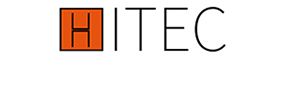
Within the sub-project HITEC (Hybrid Integrated Electronic Components), the German cluster partners are collaborating with the American cluster NextFlex on the development of hybrid electronics for spatially resolved multi-sensors.
INNOVATE

In the sub-project INNOVATE (Integration of Novel Large Area Sensor Technology), the German cluster partners are working together with the South Korean cluster CASE - Center for Advanced Soft Electronics on the development of printed, large-scale and locally resolved multi-sensors.

The international networking of the cluster partners with structures in South Korea and the USA enables the leading-edge cluster, both in the medium and long term, to access the research and expert pools available there. The aim is to achieve an independent exchange between actors with complementary skills and thus, significantly reduce the development periods. Overall, the leading-edge cluster is striving to improve its innovative capacity and international competitiveness.
Project coordination: InnovationLab GmbH
Funding period: 01.04.2019 – 30.09.2022
Funding volume: € 3 million
Current Research Projects of Dr. Gerardo Hernández-Sosa:
BIOLICHT - Printed Bio-Organic Light-Emitting Devices:
Towards Sustainable Optoelectronics
Project Number: 03X5526
01.11.2014 - 31.10.2020
The BMBF funded junior group will work on the use of biodegradable/biocompatible materials for the fabrication of organic optoelectronic devices through industrial relevant techniques. The rationale is the combination of state-of-the-art high-throughput printing techniques with the topic of more sustainable and “greener” Technologies.
“Digitally Printed Molecularly Oriented Organic Semiconductors for Optoelectronic Devices.”
Deutsche Forschungsgemeinschaft (DFG) - Project number 419864370
01.02.2020 - 31.01.2023
The main objective of the project is the on-demand control of the molecular orientation of organic semiconducting materials by inkjet printing. By using a crystallizable additive in the ink formulation that serves as a template during the drying process, we will enable the substrate independent deposition of self-organized oriented films. Consequently, we will be able to access and design material properties enhancing the functionality of thin film optoelectronic devices such as field-effect transistors and polarization sensitive photodetectors. Most importantly, due to the nature of the digital fabrication process we expect to have an impact on the fabrication of future complex electronic systems comprising of tailored components with freedom of design and placement on arbitrary substrates.
“Printed Dry Electrodes and Wireless System for High-Fidelity EEG, EMG and Temperature Recordings”
Cooperation with Prof. Y. Hanein, Tel-Aviv University
Deutsche Forschungsgemeinschaft (DFG) - Project number 427777577
01.10.2020 - 30.09.2023
The objective of this project is to develop and test novel printing methodologies for state of the art sEMG, EEG and temperature recording systems. In particular, we will design the systems for the ease of use by untrained personnel outside a hospital or laboratory environment, thus revolutionizing the use of skin electrophysiology into everyday technology. The system will allow wireless communication to a personal computer (PC) and portable devices, and will be based on an electrode patch that allows a quick and simple placement on the skin. The design of the electrode array will be personalized and will offer mechanical stability, long-term recordings and above all – user comfort. The electrode will be fabricated by low-cost printing methods such as inkjet printing onto flexible substrates utilizing the conductive polymer PEDOT and PEDOT-based composites as active materials.
Previous Projects
POESIE & InterPhase
POESIE & InterPhase: 14,5 mio. Euro for Research at InnovationLab
Two ambitious research projects launched their activities at InnovationLab in Heidelberg. Our aim was to resolve fundamental questions regarding the optimization of materials, processes and design schemes for the manufacturing of printed electronics. The outcome of these projects will provide a decisive contribution towards the commercialization of this emerging, resource-efficient technology.
Why printed electronics and what will it be used for?
Using printing technologies for the production of electronic components will lead to devices with intriguing new properties such as transparency, flexibility, or stretchability. These properties will enable innovative product solutions in fields such as energy conversion, bioelectronics or medical diagnostics. Furthermore, biological and technical sensor systems are creating new opportunities for applications and for an economic utilization in the field of medical engineering. Being a cost-efficient method of mass production printed electronics present a tremendous potential for savings and therefore enables ubiquitous applications of electronic systems. However, before this vision can become a reality, a fundamental understanding of the interplay between material properties, printing processes and performance limiting effects at device interfaces needs to be developed. Both projects will make important contributions to this understanding.
Interphase
Funding period: 01.12.2015 - 30.11.2019
Funding volume: 7,4 Mio. Euro
POESIE
Funding period: 01.09.2015 - 28.02.2019
Funding volume: 7 Mio. Euro
Interfaces in Opto-Electronic Thin Film Multilayer Devices (INFORM)
Within the INFORM project, funded by the EU Framework Program for Research and Innovation Horizon 2020 as a Marie Skłodowska-Curie Action, the team elucidates how interfacial composition, microstructure, structural and energetic order/disorder and molecular conformation at the interfaces impact the optoelectronic phenomena, how they determine the performance of organic and inorganic/organic hybrid devices and their lifetime, and use this gained knowledge to design more reliable structures that can be manufactured over large areas for the benefit of the European technology space.
Most importantly, they use their research activities as the ultimate platform for training highly skilled mobile scientists with strong interdisciplinary skills and insight. The accrued training is widely transferable to other advanced functional materials, electronics & photonics, manufacturing and energy areas. As much of the research activity involves development, processing and application, awareness and capability in relation to these are also established, INFORM will help the EU maintain a supply of much-needed versatile researchers.
Printed Organic Circuits and Chips (POLYTOS)
In this project, new materials, concepts, components, manufacturing processes and software for printed organic circuits with integrated sensors are to be developed for applications in the packaging sector. In the future, these systems could be used as printed "smart labels". "Smart labels" are intelligent and flexible transponders which, together with their antennas, are applied to a film and can transmit information. Their main use is in the logistics and packaging sector.
Partners
Complementary Circuit Technology for Printed Displays (KOSADIS)
Printed circuit technology on flexible substrates allows flexible displays to be made in a cost-effective way, for example for use in packaging and coded price displays on shelves. The aim of this project is to develop materials and manufacturing processes and test prototype displays with integrated control circuits and line control for displays.
Partners
Printed Process and Nano Structuring (NANOPEP)
Combining new organic materials with large-scale printing processes allows the manufacture of forward-looking products, such as transparent photovoltaic films or flexible light diodes. This project aims to revolutionize printing technology using innovative printing processes and functional materials with nano components. In a three-tiered approach, from laboratory scale through to the production environment, the partners are working together to optimize interplay between materials, applications and printing processes.
Partners
Organic Light Diodes (PRINT-OLED)
Large-scale printing and coating processes have the potential to significantly reduce the manufacturing costs for organic light diodes and to use flexible films as substrate carriers. The aim of this project is to investigate, by way of examples, whether emitter/matrix systems which have already been developed for evaporation processes can be transferred to printing processes.
Partners
Organic Sensor System Applications (GLUCOSENS)
Components and circuits based on organic electronics allow sensors to be mass produced in a cost-effective way. This makes new applications possible, for example in medical technology. The use of organic electronics brings with it significant improvements in the production, recycling and performance of sensors. Neither precious nor heavy metals are needed for production. The aim of this project is to develop a measuring device for the continuous determination of the blood sugar level, which allows ongoing decisions on treatment, reliable warnings for hypo- and hyperglycemia and direct control of an insulin pump (artificial pancreas).
Partners
Solar2Fuel CO2-Reduction
The aim of this joint project is to work on a new kind of technology for the chemical conversion of carbon dioxide (CO2) into fuel or useful chemical products with the help of sunlight. This can help to achieve sustainable use of resources and a reduction in greenhouse gas emissions. In this, the focus is on the production of methanol, a climate-neutral fuel in combustion motors or fuel cells. It is not just the technological approach which is innovative using specially functionalized semiconductor nano particles as catalysts but also the goal of using industrial exhaust gas flows as a possible source of useful products.
Partners
Technology Development for Printable Thin Film Photovoltaics (TEDD)
The CIS technology currently used in the manufacture of thin film photovoltaics is based on vacuum deposition processes. The intention is to further develop this technology towards complete printability in the course of the project. In terms of future prospects, a particular aim is tandem cells in which the usable IR portion of the sunlight spectrum is harvested by inorganic nano semiconductors and the visible part of the spectrum by the rapidly developing organic films. The project goals are efficient printed absorber films in laboratory quantities and the realization of liquid-processed inorganic/organic tandem solar cells.
Partners
Using Polymer and Fullerene Nanoparticles for the Production of Organic Solar Cells (UNICORN)
The use of aqueous or alcoholic polymer nanoparticle dispersions avoids environmentally harming, toxic or carcinogenic solvents for the production of organic solar cells. This is particularly important for low-cost and large-scale printing or coating process in the future. The project partners contribute to this project with their knowledge about the synthesis of nanoparticle dispersions and device production.
